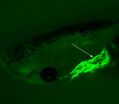(Press-News.org) LIMA--(2 December 2014) A new peer-reviewed study, released today at the start of the UN climate conference in Peru, reveals the unprecedented amount of carbon stored within the nine-nation network of Amazonian indigenous territories and protected natural areas. Accepted for publication in Carbon Management, the paper entitled, "Forest Carbon in Amazonia: The Unrecognized Contributions of Indigenous Territories and Protected Natural Areas," suggests that protecting the vast amount of carbon stored above ground in the forests of indigenous and protected lands - totaling 55% of the Amazon - is critical to the stability of the global climate as well as to the cultural identity of forest-dwelling peoples and the health of the ecosystems they inhabit.
"We see, for example, that the territories of Amazonian indigenous peoples store almost a third of the region's aboveground carbon on just under a third of the land area," said Woods Hole Research Center (WHRC) scientist Wayne Walker. "That is more forest carbon than is contained in some of the most carbon-rich tropical countries including Indonesia and the Democratic Republic of the Congo."
Yet the authors also find that nearly 20% of tropical forests across Amazonia are at risk from legal and illegal logging, construction of new roads and dams, and the expansion of commercial agriculture, mining, and petroleum industries, pressures which are exacerbated in many countries because governments have failed to recognize or enforce indigenous land rights.
"We have never been under so much pressure, as this study demonstrates," said Edwin Vásquez, co-author and president of COICA, the Indigenous Coordinating Body of the Amazon Basin, which represents indigenous groups in the region. "Yet we now have evidence that where there are strong rights, there are standing forests. And knowing that we have more than half of the region's carbon on indigenous and protected lands, we can tell our leaders so they can strengthen the role and the rights of indigenous forest peoples.
The paper is the result of a novel north-south collaboration among scientists, Amazonian indigenous and NGO networks, and environmental policy experts who combined satellite measurements of carbon density, field data and boundary records of indigenous territories and protected areas. "Until recently, an analysis of this scope would not have been possible; however, the availability of consistent and accurate spatial data across large areas like the Amazon has made a tremendous difference," according to scientist Alessandro Baccini also of WHRC.
The Amazon is comprised of 2,344 indigenous territories and 610 protected areas, spread across nine countries. These areas are exceptional in terms of biological, cultural and linguistic diversity. They are also considered the cornerstone of Amazon conservation efforts, since they serve as social and natural barriers to the advance of agriculture and forest fires. In countries such as Brazil, with historically high levels of deforestation, indigenous forests and protected areas are seen as vital to combating carbon dioxide emissions from deforestation and forest degradation.
"This means that international recognition and investment in indigenous and protected areas are essential to ensuring their continued contribution to global climate stability," said Richard Chase Smith, of Peru's Instituto Bien Comun. Smith also noted that social conflict in Peru and other Amazonian countries would continue to escalate if governments failed to ensure secure land tenure for their indigenous peoples.
"If all the current plans for economic development in the Amazon are actually implemented, the region would become a giant savanna, with islands of forest," said Beto Ricardo, of the Instituto Socioambiental (ISA) of Brazil. " A vast proportion of indigenous territories and protected areas are increasingly at risk, with potentially disastrous consequences, "including 40% of the indigenous territories, 30% of the protected areas, and 24% of the area that pertains to both."
In summarizing the implications of their study, the authors conclude that in the near term, maintaining the stability of the atmosphere, together with the range of globally significant environmental and social services provided by Amazonian forests, will depend on whether governments choose to adopt policies that ensure the ecological integrity of indigenous territories and protected areas. Continued destruction of these carbon-rich ecosystems will gradually diminish their ability to function properly, the study says, resulting in a detrimental and potentially irreversible impact on the atmosphere and the planet.
"The solution is to recognize the rights of indigenous peoples to territories that have not yet been officially recognized, and resolve territorial conflicts that pit protected areas against private interests," said Steve Schwartzman, author and Senior Director of Tropical Forest Policy at Environmental Defense Fund (EDF).
INFORMATION:
The study was carried out with participation from the Woods Hole Research Center, the Amazonian Network of Georeferenced Socio-Environmental Information (RAISG), the Coordinator of Indigenous Organizations of the Amazon River Basin (COICA) and the Environmental Defense. It was made possible through the financial support of the World Bank, Rainforest Foundation Norway, Ford Foundation, and the Gordon and Betty Moore Foundation.
Link to Carbon Management article: http://www.tandfonline.com/toc/tcmt20/current#.VH4E9zHF_Tp
For more information, contact:
Coimbra Sirica: +1 301 943 3287; csirica@burnesscommunications.com
Jennifer Andreassen, Environmental Defense Fund, +1-202-288-4867, jandreassen@edf.org
Eunice Youmans, Woods Hole Research Center, +1-508-444-1509, eyoumans@whrc.org END
COLUMBIA, Mo. - According to a recent report from the Federal Reserve Board, 31 percent of Americans surveyed said they had no retirement savings, and almost half were not actively thinking about planning for retirement. Studies show that many Americans do not invest because they distrust the market and fear financial losses. Now, a University of Missouri researcher has found a way for financial planners to help decrease their clients' worries, which stem from the fear of losing money.
Michael Guillemette, an assistant professor in the MU College of Human Environmental ...
EAST LANSING, Mich. - To hunt or not hunt wolves can't be quantified as simply as men vs. women, hunters vs. anti-hunters, Democrats vs. Republicans or city vs. rural.
What's truly fueling the divisive debate is fear of wolves or the urge to care for canis lupis. The social dynamics at play and potential options for establishing common ground between sides can be found in the current issue of the journal PLOS ONE.
"People who are for or against this issue are often cast into traditional lots, such as gender, political party or where they live," said Meredith Gore, associate ...
Using a novel gene knock-in technique, effective insertion of an exogenous gene was demonstrated in human cells and in animal models, including silkworms and frogs. This strategy universally enables gene knock-in not only in cultured cells, but also in various organisms.
Genome editing using programmable nucleases enables homologous recombination (HR)-mediated gene knock-in. HR activity, however, is relatively low in most cultured cells and organisms. This problem presents technical hurdles for the application of HR-mediated knock-in technology in the field of life sciences. ...
RICHLAND, Wash. - A new study will help researchers create longer-lasting, higher-capacity lithium rechargeable batteries, which are commonly used in consumer electronics. In a study published in the journal ACS Nano, researchers showed how a coating that makes high capacity silicon electrodes more durable could lead to a replacement for lower-capacity graphite electrodes.
"Understanding how the coating works gives us an indication of the direction we need to move in to overcome the problems with silicon electrodes," said materials scientist Chongmin Wang of the Department ...
HANOVER, N.H. - Logging doesn't immediately jettison carbon stored in a forest's mineral soils into the atmosphere but triggers a gradual release that may contribute to climate change over decades, a Dartmouth College study finds.
The results are the first evidence of a regional trend of lower carbon pools in soils of harvested hardwood forests compared to mature or pristine hardwood forests. The findings appear in the journal Global Change Biology Bioenergy. A PDF of the study is available on request.
Despite scientists' growing appreciation for soil's role in the ...
PULLMAN, Wash. - More than one-third of new commercial building space includes energy-saving features, but without training or an operator's manual many occupants are in the dark about how to use them.
Julia Day recently published a paper in Building and Environment showing for the first time that occupants who had effective training in using the features of their high-performance buildings were more satisfied with their work environments. Day did the work as a doctoral student at Washington State University; she is now an assistant professor at Kansas State University.
Closed ...
TORONTO, ON - Scientists have long known that air pollution caused by cars and trucks, solvent use and even plants, is reduced when broken down by naturally occurring compounds that act like detergents of the atmosphere. What has not been well understood until now are the relative contributions of all the processes producing such compounds.
A new study, led by University of Toronto atmospheric chemist Jennifer Murphy, shows a key component of the process is the soil beneath our feet.
"Pollutants in the atmosphere are broken down by hydroxyl radicals that are produced ...
This news release is available in German.
VIDEO:
Scientists decode the three-dimensional structure of the calcium channel with unprecedented accuracy.
Click here for more information.
Whenever muscles contract, so-called ryanodine receptors come into play. Calcium ions, which are ultimately responsible for the contraction of muscle cells, are released from storage organs and flow ...
Researchers working at the Advanced Light Source (ALS) of the U.S. Department of Energy (DOE)'s Lawrence Berkeley National Laboratory (Berkeley Lab) have combined key features of two highly acclaimed X-ray spectroscopy techniques into a new technique that offers sub-nanometer resolution of every chemical element to be found at heterogeneous interfaces, such as those in batteries and fuel cells. This new technique is called SWAPPS for Standing Wave Ambient Pressure Photoelectron Spectroscopy, and it combines standing-wave photoelectron spectroscopy (SWPS) with high ambient ...
When wild birds are a big part of your diet, opening a freshly shot bird to find worms squirming around under the skin is a disconcerting sight. That was exactly what Victoria Kotongan saw in October, 2012, when she set to cleaning two of four spruce grouse (Falcipennis canadensis) she had taken near her home in Unalakleet, on the northwest coast of Alaska. The next day, she shot four grouse and all four harbored the long, white worms. In two birds, the worms appeared to be emerging from the meat.
Kotongan, worried about the health of the grouse and the potential risk ...




